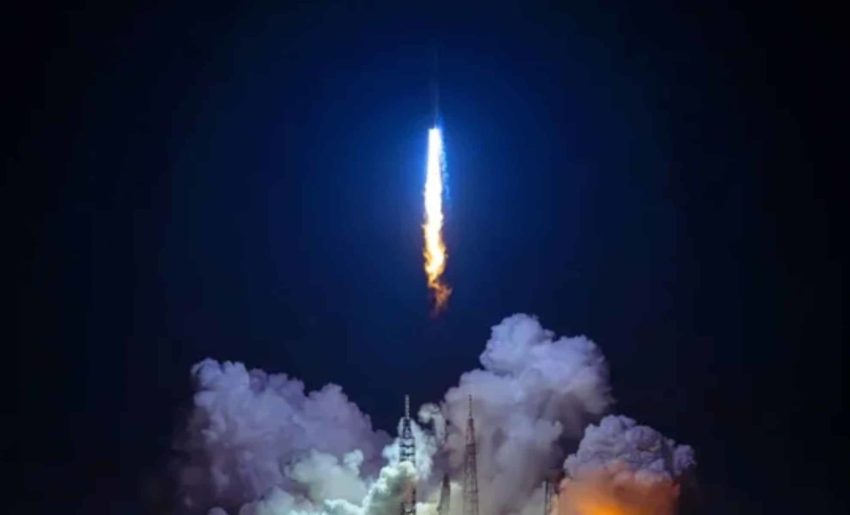Blue Origin’s New Glenn Takes on Mars with a Historic Mission
Blue Origin is preparing for the second flight of its heavy-lift rocket, New Glenn, marking a significant milestone in commercial spaceflight. This mission, known as NG-2, will carry NASA’s ESCAPADE satellites to Mars, making it the rocket’s first interplanetary journey and the first orbital science mission to study the Martian magnetosphere. The launch was initially scheduled for October 2024 but faced delays due to concerns over the rocket’s readiness. Now, after months of preparation, everything is set for a bold step forward.
A Mission to the Red Planet
The NG-2 mission aims to send two satellites, part of NASA’s ESCAPADE (Escape and Plasma Acceleration and Dynamics Explorers) project, into orbit around Mars. These twin spacecraft are designed to investigate how solar winds interact with the planet’s magnetic field. This research could provide critical insights into how Mars’ atmosphere evolved over time, potentially offering clues about the planet’s past habitability and future colonization possibilities.
CEO Dave Limp expressed his excitement on social media: “This will be an exciting mission for New Glenn and Mars exploration. ESCAPADE is not only New Glenn’s first interplanetary mission, it’s also the first multi-spacecraft orbital science mission to study the Martian magnetosphere. And, we hope to land and recover our booster for the first time.”
Reusability and Innovation
New Glenn’s design emphasizes reusability, with each booster capable of up to 25 flights. This approach mirrors that of SpaceX’s Falcon 9 rocket. During the first launch, Blue Origin attempted to recover the booster on the vessel “Jaclyn,” named after Jeff Bezos’ mother, but the effort was unsuccessful. This time, the company is hoping for a successful landing, which would further demonstrate the rocket’s capabilities.
Scientific Significance of the ESCAPADE Mission
The ESCAPADE mission represents a major scientific advancement for both NASA and its commercial partners. The twin spacecraft were built by Rocket Lab and are engineered to map the Martian magnetosphere, an area where solar winds and planetary magnetic fields interact. Understanding this region is crucial for long-term human exploration of Mars and the development of radiation-shielded spacecraft.
NASA’s Nicky Fox, associate administrator for science, highlighted the importance of the mission: “This mission can help us study the atmosphere at Mars—key information as we explore farther and farther into our solar system and need to protect astronauts and spacecraft from space weather. We’re committed to seeing ESCAPADE safely into space.”
Strategic Implications for Blue Origin
For Blue Origin, the NG-2 mission is more than just another launch—it’s a demonstration of capability. Success here could strengthen the company’s position in NASA’s Artemis program, where it is already developing Blue Moon lunar landers, including a human landing system for Artemis V. Additionally, the mission plays a strategic role in national security spaceflight, as the U.S. Space Force requires at least two successful orbital launches before certifying a rocket for defense missions.
Infrastructure and Investment
Blue Origin has made significant investments in infrastructure to support this mission. Manufacturing for New Glenn takes place at Rocket Park on Merritt Island, near Kennedy Space Center, while final launch preparations occur at Launch Complex 36, a site with a rich history dating back to the 1960s lunar missions. The company’s $1 billion investment underscores its long-term commitment to Florida-based launches and highlights its competition with SpaceX and United Launch Alliance (ULA).
Technical Specifications and Ambitions
Standing at 321 feet tall, New Glenn is significantly larger than Blue Origin’s earlier New Shepard suborbital rocket. It is powered by seven BE-4 engines, generating 3.85 million pounds of thrust, making it more powerful than ULA’s Atlas V and more than double the power of SpaceX’s Falcon 9. With a 23-foot-diameter payload fairing, New Glenn offers the most generous cargo volume among commercial rockets.
These specifications reflect Blue Origin’s ambition to become a leader in the heavy-lift spaceflight market. Alongside government missions, the rocket will also serve commercial interests, including Amazon’s Project Kuiper, which has contracted at least 12 launches to deploy an internet satellite constellation aimed at challenging Starlink.
